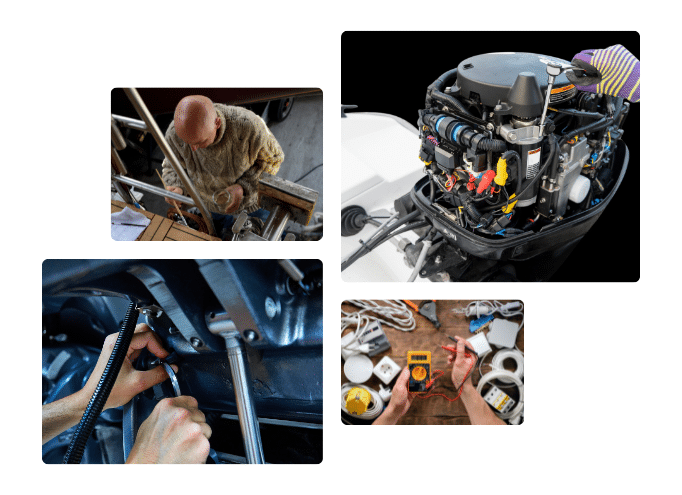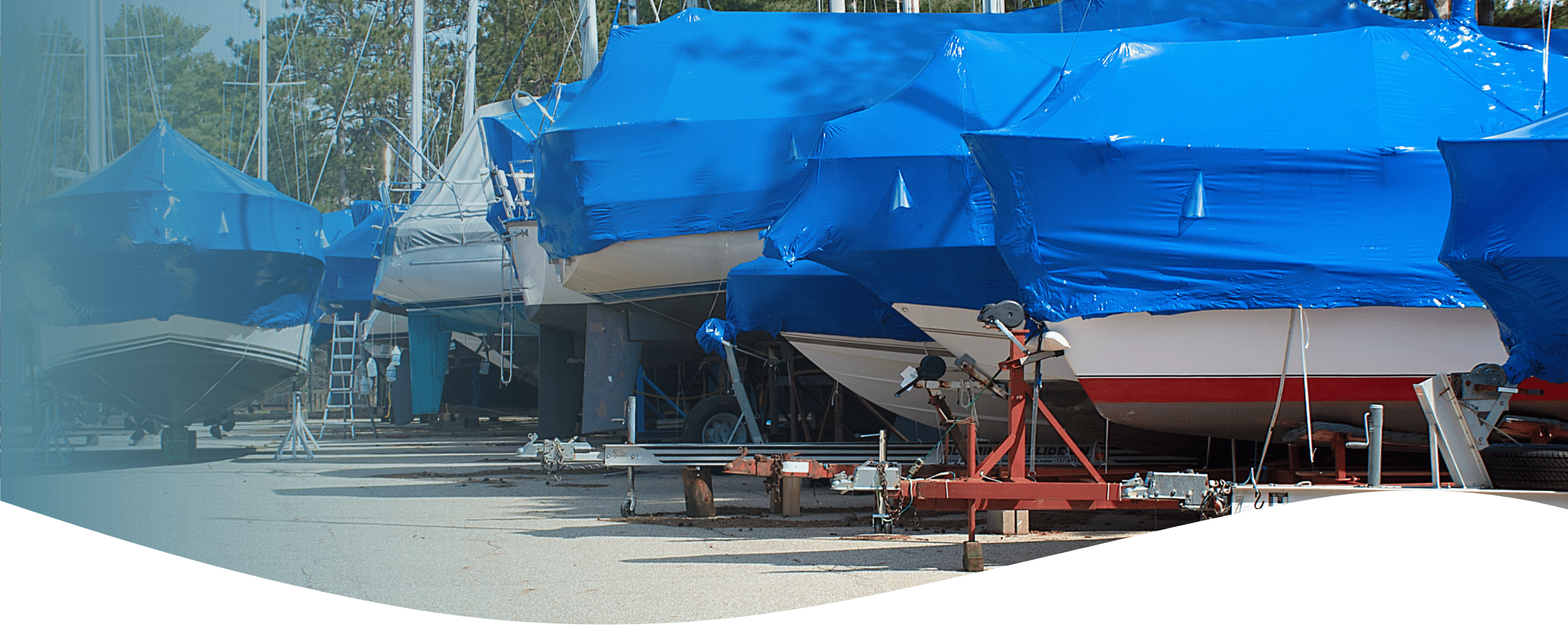BOAT MAINTENANCE
The following are general guidelines. Check your owner’s manual for manufacturer’s recommendations/procedures particular to your boat.
Also, double check that your insurance policy will cover damage caused by freezing if your vessel wasn’t professionally prepared for winter storage by a certified marine mechanic or marina.
Following these fall storage steps now will increase your changes of a smooth a spring commissioning.
INBOARD ENGINES
- Change oil & oil filter
- Flush engine with fresh water
- Circulate antifreeze through the manifold
- Change transmission fluid
- Remove spark plugs/spray “fogging oil” into each cylinder (Gas engines ONLY)
- Wipe down the engine
STERN DRIVE
- Inspect stern drive/remove any plant life or barnacles
- Drain gear case and check for excessive moisture in the oil
- Clean lower unit with soap & water
- For units with rubber boot: Check rubber boot for cracks or pinholes
- Grease all fittings
- Check fluid levels in hydraulic steering or lift pumps
OUTBOARD ENGINES
- Flush engine with water; drain completely
- Wash engine with soap & water
- Disconnect fuel hoses; run engine until it stops
- Ensure all fuel is drained from carburetor
- Lubricate cylinder walls & pistons with fogging oil
- Apply water-resistant grease to propeller shaft & threads
- Change gear oil in lower unit
- Lubricate engine exterior or polish with a good wax
BILGES
- Clean & dry
- Clean any oil spills with soap & hot water
- Once dry, spray with moisture-displacing lubricant
- Add a little antifreeze to prevent any water from freezing
FUEL
- Fill fuel tank
- Add fuel stabilizer
- Change fuel filter(s) & water separator(s)
FRESH WATER SYSTEM
- Drain fresh water tank & hot water heater
- Isolate hot water heater by connecting the in & out lines together
- Pump non-toxic antifreeze into the system & turn on all faucets/shower/wash down areas until antifreeze starts running out
- Put non-toxic antifreeze in the water heater
HEAD
- Pump out holding tank; while pumping add fresh water to the bowl & flush several times
- Add manufacturer-recommended marine cleaner/deodorizer; let sit a few minutes, then add water and pump out again
- Add antifreeze & pump through hoses, holding tank, y-valve, macerator & discharge hose
INTERIOR
- Remove valuables, electronics, lines, PFDs, fire extinguishers, flares, fenders, etc.; clean, check and replace as necessary
- Open all drawers/ lockers & clean
- Turn cushions on edge so air can circulate around them or store in a climate controlled area
- Install a dehumidifier or use an odor & moisture absorber to keep your boat dry & mildew free
OUT-OF-WATER STORAGE
- Pressure wash hull, clean barnacles off props & shafts, rudders, struts & trim tabs
- Clean all through-hulls & strainers
- Open seacocks to drain water
- Check hull for blisters; attend to any you find
- Wax hull
- Take batteries out of boat; put on trickle charger or charge them every 30–60 days
Courtesy of Discover Boating. Download PDF here.
Read Next: Why Every Boater Needs a Current Vessel Inventory
We don’t always think of our boats as assets—until something goes wrong. Theft, fire, or storm damage can happen to any boat, anywhere. And when it does, the last thing you want is to be guessing what gear was on board, when it was purchased, or what it’s worth.
BOATING COURSES
Boat and Engine Maintenance
Keep the water on the other side of the wall! From spark plugs to bottom paint, this course covers all the basics for DIY boaters. This course will equip you with the knowledge required to prevent onboard problems, carry out specialized tasks and tackle both short-term troubleshooting as well as long-term boat care.
The dream of owning, maintaining and using your own boat without great expense can be achieved through the completion of the Boat and Engine Maintenance Course.

